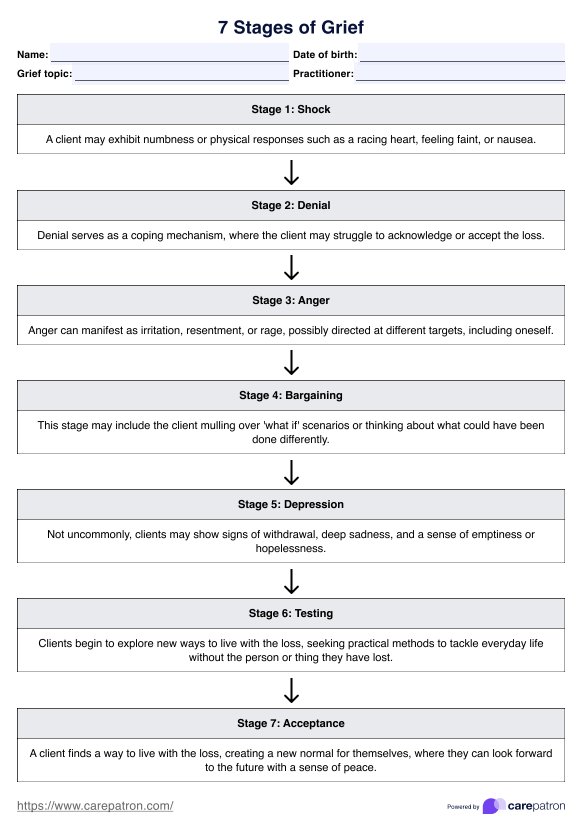Shock or disbelief, which often occurs before denial, and testing, a stage where individuals experiment with different ways to manage their pain before reaching acceptance.

7 Stages of Grief PDF
Understand the expanded version of the grief model through the seven stages of grief resource and how you can apply this in practical client work.
7 Stages of Grief PDF Template
Commonly asked questions
Identifying the most complex stage of grief can be challenging as it varies significantly from person to person. It may depend on individual circumstances, the relationship to what or who was lost, personal coping mechanisms, and other life factors. Some find the intense emotions of anger or depression particularly challenging, while others may struggle more with the initial shock or the ongoing process of bargaining.
If a person doesn't actively engage in the grieving process, the emotions associated with the loss may remain unresolved. It's important to remember that grieving is a personal process, and while it cannot be rushed, finding a way to express and work through the loss is critical for long-term emotional health and well-being.
EHR and practice management software
Get started for free
*No credit card required
Free
$0/usd
Unlimited clients
Telehealth
1GB of storage
Client portal text
Automated billing and online payments











